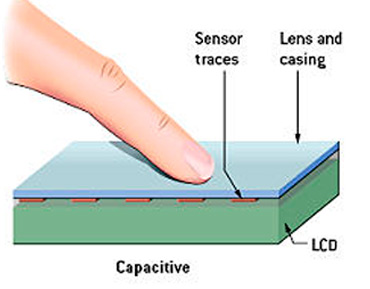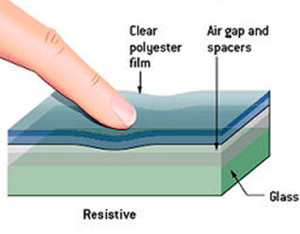|
The Difference Between Capacitive and Resistive Touch Technologies
Interfacing has always been a basic tenet of human existence, whether it be communicating with each other, or interfacing with all the facets of our world. Touchscreen has changed the game in how we interact with devices, information, and even each other, as it has become the most intuitive and easiest way to access and input information.
Xenarc Technologies Corporation was a pioneer in touch interface in small form factor screens when it introduced the 700TSV to the world. A 7” resistive touchscreen display with VGA input, until that point, never existed. Today, Xenarc Technologies is a market leader in small form factor touchscreen displays, carrying a wide variety of both resistive and capacitive displays. What’s the difference between these 2 types of touch interface technologies?

Capacitive Touchscreens
Capacitive – Uses electric sensors, which react to the natural AC electric current that runs through the human body, to detect touch.

Resistive Touchscreens
Resistive – A flexible top layer (glass or plastic) touches a bottom electronic layer when pressure is placed on the display, creating an electronic current translated into a command by the touch software.
There are pros and cons to both technologies. Resistive is more common, and more cost efficient. Capacitive tends to be more accurate and durable, but cannot be used with thick gloves that are not conductive.
The future of touchscreen interfacing is limitless. It has penetrated practically every facet of our lives, including smart phones, personal computing, home appliances, and enterprise communication, among other areas.
Please check out our most popular Rugged All-Weather Touchscreens:: Capacitive or Resistive displays below, and see how Xenarc can help you deliver unmatched user experience for your customers with the most advanced touch screen panels.
|